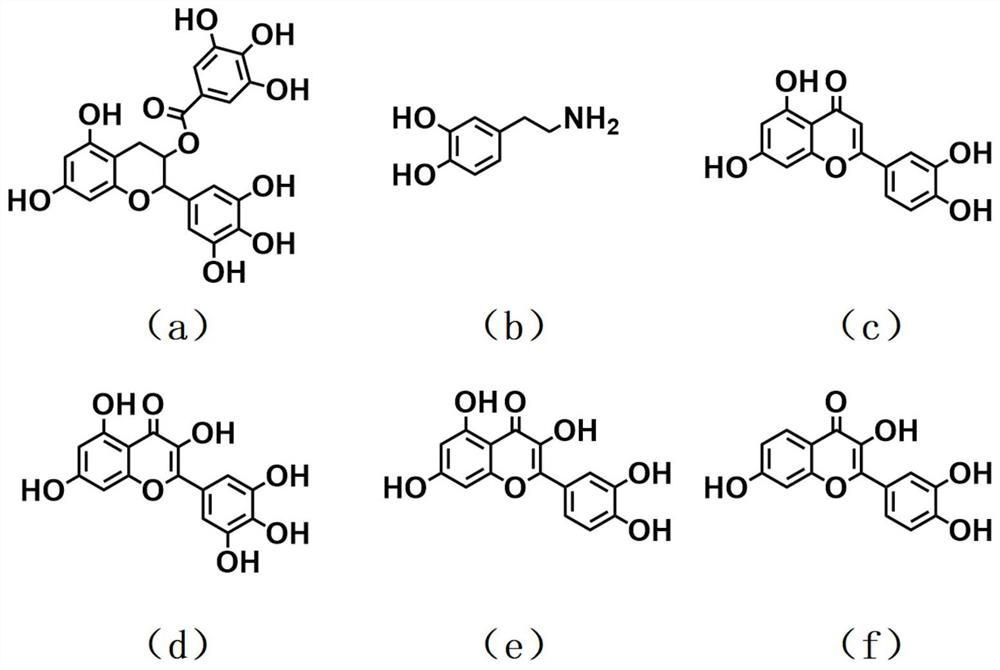Metal polyphenol collagen membrane material as well as preparation method and application thereof
A polyphenol collagen and collagen technology, which is used in medical science, bandages and other directions to achieve the effects of inhibiting bacterial growth, promoting healing, and excellent repairing effects.
- Summary
- Abstract
- Description
- Claims
- Application Information
AI Technical Summary
Problems solved by technology
Method used
Image
Examples
Embodiment 1
[0035] This example is an example of preparing complexes of polyphenols and metal ions. This example prepares 3 groups of complexes. The first group chelates epigallocatechin gallate with magnesium ions, and the second group chelates dopamine Chelated with iron ions, the third group chelates quercetin with copper ions.
[0036] The preparation method is as follows:
[0037] Dissolving polyphenols in water to obtain a polyphenol solution, adding ammonia water to adjust the pH of the polyphenol solution to 8-10, and stirring at room temperature for 24 hours to obtain polyphenol nanoparticles. Slowly add an aqueous solution of metal ions (such as an aqueous solution of magnesium chloride, aqueous ferric chloride, or aqueous copper chloride) dropwise into the polyphenol solution, wherein the amounts of metal ions and polyphenols are 10-20 parts by weight and 100-120 parts by weight, respectively; Add ammonia water to adjust the pH to 8-10, and stir at room temperature for 24 hour...
Embodiment 2
[0040] This embodiment is an embodiment of preparing collagen gel.
[0041] The collagen is completely dissolved in acetic acid solution, and then freeze-dried into a gel. Gained collagen gel is carried out electron microscope observation, electron microscope figure sees Figure 4 , it can be seen from the figure that the particle size of the collagen gel is on the order of μm, and it has a porous structure, which can well load nano-complex particles.
Embodiment 3
[0043] 85 parts by weight of collagen were dissolved in acetic acid solution, and stirred at room temperature overnight until completely dissolved. Add 15 parts by weight of epigallocatechin gallate (EGCG) nanoparticles into the collagen solution, adjust the pH to 7.4-8.0, and incubate in an oven at 35° C. to 37° C. for 24 hours until gelling. The hydrogel was freeze-dried in a freezer for 2 days to prepare a freeze-dried sponge, and the freeze-dried sponge was rolled into a film with a plexiglass frame mold.
PUM
 Login to View More
Login to View More Abstract
Description
Claims
Application Information
 Login to View More
Login to View More - R&D
- Intellectual Property
- Life Sciences
- Materials
- Tech Scout
- Unparalleled Data Quality
- Higher Quality Content
- 60% Fewer Hallucinations
Browse by: Latest US Patents, China's latest patents, Technical Efficacy Thesaurus, Application Domain, Technology Topic, Popular Technical Reports.
© 2025 PatSnap. All rights reserved.Legal|Privacy policy|Modern Slavery Act Transparency Statement|Sitemap|About US| Contact US: help@patsnap.com



